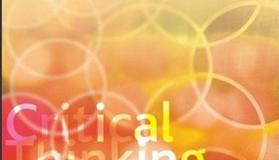Text 5: The Assessment of HealthRisks
1 Opinion polls repeatedly tell us that theonly thing Americans worry about more than the environment is their health.This is entirely understandable, for health is obviously preferable to illness.What makes today’s preoccupation with health slightly surprising is thatAmericans are far healthier now than they have ever been. Many diseases thatonce struck terror into hearts have either been completely eliminated orbrought under control. Although AIDS is a notable exception, few new masskillers have come along to replace the ones that have been eliminated.
2 Nonetheless, health—and the various threatsto it—remains everyone’s permanent concern. After all,more than half of us (57 percent) will die from either heart disease or cancer,if current trends continue.
3 One major problem with any comparison ofhealth risks—especially life-threatening ones—is that they differ enormously intheir immediacy. For instance, AIDS—if you get it—will probably be fatal aftera number of years. Cancer induced by smoking or exposure to radiation, on theother hand, may take 20 to 30 years before its catastrophic effects show up. Inmaking choices about health risks, therefore, it is important to bear in mindthe likely time lag between taking a risk and suffering its consequences.
4 Those with a mind to “live for today” areapt to be indifferent to health risks that have a very long incubation period.Although this is short-sighted, it does make sense to discount long-term risksmore than short-term ones. After all, when virtually any of us is confrontedwith the choice of doing something likely to kill us today versus doingsomething likely to kill us in two decades, the choice is going to be thelesser of the two evils(两害之较轻者).
5 One commonly used measure to deal with suchproblems is a concept called years of potential life lost (YPLL). The idea isthat for a 25-year-old, doing something that will kill him in 5 years is muchmore “costly” than doing something that will kill him in 40 years. Both mayinvolve the same element of risk—the same probabilityof eventually dying from that activity—but a risk that may cause immediatedamage is much more costly than one for which the piper needn’t be paid for along time. In the first case, he will have his normal life span cut short byabout 45 years: in the later case, the deficit is about 5 years. Thinking aboutmatters in this light inevitably causes a reassessment of many of the threatsof health. For instance, heart disease is the single largest killer ofAmericans, very far in front of cancer and strokes. However, heart diseasetends to strike the elderly in much greater proportions than younger people.Cancer, by contrast, kills fewer people but tends to strike somewhat earlierthan heart disease. Hence, more YPLLs are lost to cancer than to heartdisease—despite the greater incidence of fatal heart cases. Specifically,cancers claim about 25 percent more YPLLs than heart disease (if we define theYPLL as a year of life lost before age 65).
6 The concept of YPLLs has an important, ifcontroversial, influence on issues in health care economics. It is frequentlyargued that money devoted to medical research on curing diseases should bedivided up on the basis of the number of lives lost to each disease. Thus, somecritics of the massive levels of funding devoted to AIDS research claimthat—compared to killers such as heart disease and cancer—AIDS receives adisproportionately high support. That criticism fails to consider the fact thatAIDS, by virtue of striking people principally in their 20s and 30s, generatesfar more YPLLs than the figure of 20,000 deaths per year, bad as that is, mightsuggest. Put differently, finding a cure for AIDS would be likely to add about25 to 30 years the life of each potential victim. Finding a cure for heartdisease, although it might save far more lives, would probably add only another5 to 10 years to the life of its average victim.
7 The assessment of the seriousness of a riskchanges, depending upon whether we ask how many lives it claims or how manyYPLLs it involves. Some of the differences are quite striking. For instance,accidental deaths appear relatively insignificant compared to cancer and heartdisease when we just count the deaths caused. But once we look at the number oflost years, accidents loom into first place among the killers of Americans.These data show that we need to ask not only how large a risk is but also whenit becomes payable. Other things being equal, the sooner a risk causes damageor death, the more that risk is to be avoided.
Activity1: Based on the information given in the text, complete the following blanks byfilling in proper words.
2) to ________ or ________ under control a disease消灭或控制疾病
3) ________killer 大规模杀手
4) ________ concern 长期关注之事
5) __________ disease 危及生命的疾病
6) disease with a long ________ period 潜伏期长的疾病
7) years of potential life ________潜在寿命损失
8) ________ damage 即时损害
9) life ________ 寿命
10)__________economics 保健经济
11)________ ofdisease 病患
12)________lives 夺走生命
Activity2: Isolate the key information from the text, then illustrate the line ofreasoning of the argument with a graphic organizer.
Active3: Evaluate the argument with the help of the evaluation sheet.
Reading Evaluation Sheet
| Aspect | Detail | Relevant Question | Evaluation |
| Title of the article | |||
| Position | Is it clearly presented? | ||
| Conclusion | Is it clearly presented? Is it summative or logical? | ||
| Proposition 1 | Is it relevant, representative, and sufficient? | ||
| Proposition 2 | Is it relevant, representative, and sufficient? | ||
| Proposition 3 | Is it relevant, representative, and sufficient? | ||
| ... | |||
| Line of reasoning | Is it easy to follow? | ||
| Is it logically organized? | |||
| Is it biased or unbalanced? | |||
| Alternative arguments | Are they considered? | ||
| Strengths | What impresses you most? Is solid evidence provided? ... | ||
| Weaknesses | Are there internal inconsistency or flaws, or other weaknesses in this argument? |


